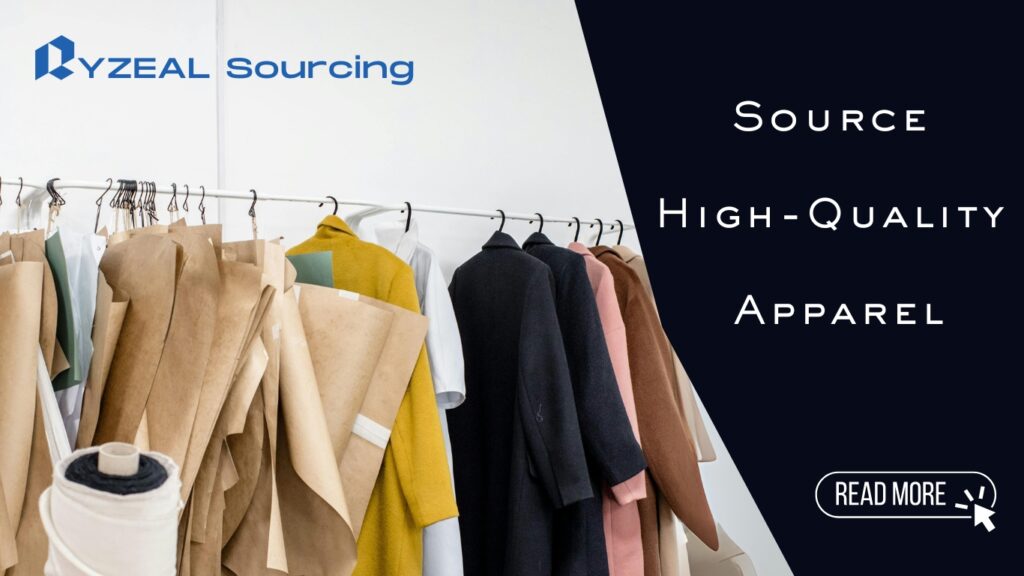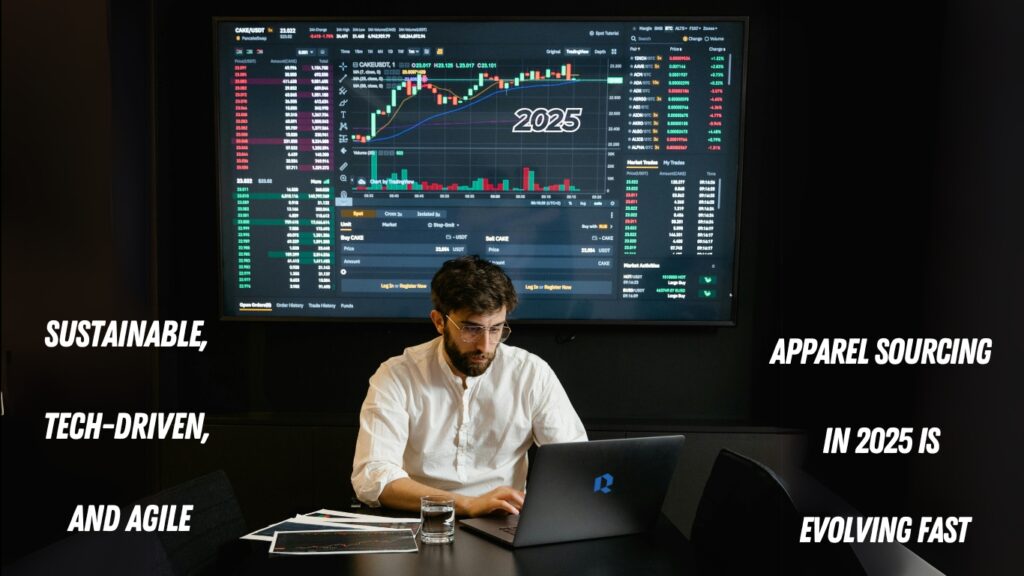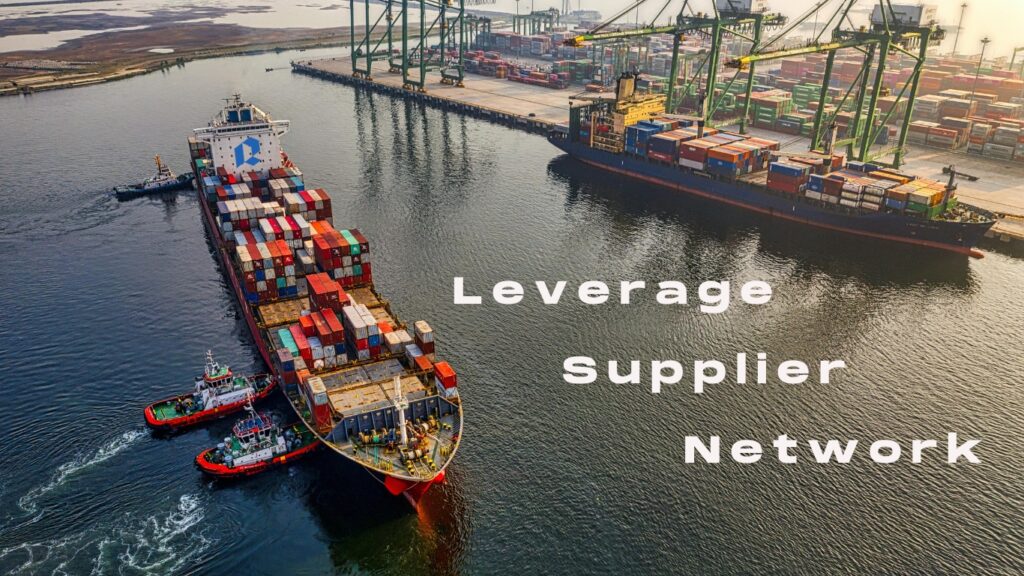
High-quality apparel sourcing in 2025 demands a smart balance between price, quality, and supplier reliability. As the industry evolves, brands must navigate rising costs, shifting global supply chains, and growing expectations for sustainable production. With the right approach, it’s possible to find trustworthy partners who deliver both excellence and value.
The global sourcing landscape is shifting due to factors like geopolitical changes, nearshoring trends, automation in manufacturing, and sustainability requirements. Brands that optimize supplier selection, negotiate better pricing, and adopt cost-efficient production strategies will gain a significant advantage in 2025’s competitive fashion market.
This guide explores how to source premium apparel efficiently, maintain cost control, and ensure reliable partnerships with the best manufacturers.
1. Identifying the Best Apparel Manufacturing Hubs in 2025
Global manufacturing hubs continue to evolve, with some regions offering lower costs and higher efficiency than others.
Top Apparel Sourcing Destinations for 2025:
- Bangladesh & Vietnam – Competitive pricing, strong infrastructure, and compliance with BSCI¹ & OEKO-TEX² standards.
- Turkey & Portugal – Fast lead times, quality craftsmanship, and EU proximity advantages for European brands.
- India – Specializes in organic textiles, embroidery, and high-quality cotton with a strong GOTS³ certification base.
- China – Advanced automation & technical textiles, but rising costs are pushing brands toward alternative regions.
- Mexico & Central America – Nearshoring benefits for U.S. brands, reducing shipping time and import tariffs.
Selecting the right country depends on cost, product type, lead time, and compliance requirements.
2. Finding Reliable & Cost-Effective Apparel Suppliers
Choosing the right supplier is crucial for balancing cost and quality. Key strategies include:
- Using Verified Supplier Directories – Platforms like Alibaba, Global Sources, and ThomasNet provide vetted supplier lists.
- Attending Apparel Trade Shows – Events such as Texworld, MAGIC Las Vegas, and Premier Vision allow direct manufacturer connections.
- Working with a Sourcing Agent or Buying House – Agencies like RYZEAL SOURCING can vet suppliers, negotiate pricing, and handle logistics.
- Conducting Supplier Audits – Ensure factories meet ethical and quality standards with third-party inspections by SGS, Intertek, or Bureau Veritas.
Reliable suppliers should offer transparent pricing, strong communication, and scalable production capacity.
3. Balancing Quality & Cost Efficiency in Apparel Sourcing
Many brands face the challenge of finding cost-effective solutions without compromising quality. Key cost-saving strategies include:
- Ordering in Bulk – Larger orders reduce per-unit costs and increase bargaining power.
- Using Locally Sourced Fabrics – Reduces shipping costs and speeds up production timelines.
- Negotiating Smartly – Request quotes from multiple suppliers and use competitor pricing to leverage better deals.
- Optimizing Shipping & Logistics – Choosing sea freight over air freight and consolidating shipments lowers costs.
- Investing in Technology – Using AI-based demand forecasting helps reduce excess production and waste.
By strategically managing order volume, material sourcing, and logistics, brands can achieve high quality at the lowest cost.
4. Ethical & Sustainable Apparel Sourcing in 2025
Sustainability is no longer an option—it’s a competitive necessity. Consumers and retailers demand eco-friendly practices from sourcing to final production.
How to Ensure Sustainable & Ethical Sourcing:
- Choose Certified Suppliers – Work with factories certified by GOTS³, OEKO-TEX², and Fair Trade⁴.
- Reduce Waste & Overproduction – Implement lean manufacturing and circular fashion strategies.
- Use Eco-Friendly Materials – Opt for organic cotton, recycled polyester, and biodegradable fabrics.
- Improve Supply Chain Transparency – Use blockchain or QR code tracking for traceable apparel sourcing.
Brands that invest in sustainable sourcing gain a market advantage and consumer trust.
5. Negotiating the Best Pricing with Manufacturers
Getting competitive pricing while maintaining high-quality production requires effective negotiation.
Best Practices for Apparel Price Negotiation:
- Understand Market Rates – Research average production costs in different manufacturing regions.
- Request Multiple Quotes – Compare pricing from at least 3-5 suppliers before finalizing deals.
- Long-Term Contracts for Better Deals – Many suppliers offer discounted rates for long-term partnerships.
- Avoid Hidden Costs – Clarify sampling fees, logistics, and post-production charges upfront.
- Offer Flexible Payment Terms – Some suppliers provide better pricing for upfront payments.

A well-negotiated supplier contract ensures cost efficiency without sacrificing quality
6. Enhancing Quality Control & Product Consistency
Without strict quality control measures, brands risk defective products and high return rates.
Key Apparel Quality Control Strategies:
- Pre-Production Testing – Verify fabric quality, shrinkage, and color fastness.
- On-Site Factory Audits – Inspect stitching, finishing, and sizing accuracy during production.
- Final Inspection Before Shipping – Implement AQL (Acceptable Quality Level) testing before bulk order dispatch.
- Third-Party Testing Services – Use organizations like SGS, Bureau Veritas, or Intertek for unbiased quality assurance.
By implementing rigorous quality control, brands can prevent costly defects and maintain product integrity.
7. Future Trends in Apparel Sourcing for 2025
As fashion sourcing evolves, brands must stay ahead of emerging trends to maintain cost-effectiveness and sustainability.
Key Apparel Sourcing Trends in 2025:
- Increased Nearshoring – More brands shifting production closer to home for faster delivery times.
- AI & Automation in Manufacturing – Improving efficiency while reducing dependency on manual labor.
- Circular Fashion Expansion – Growth in recycling, resale, and zero-waste production models.
- Growth in Sustainable Fabrics – More demand for bio-based textiles and compostable materials.
- Flexible Manufacturing Models – On-demand production and small-batch manufacturing reducing inventory waste.
Adapting to these trends ensures competitive advantage in 2025’s sourcing landscape.

By choosing the right suppliers, negotiating strategically, and prioritizing quality & sustainability, brands can source high-quality apparel at the best prices in 2025.
RYZEAL’s Perspective: Mastering Apparel Sourcing for Quality & Cost Efficiency in 2025
At RYZEAL SOURCING, we recognize that sourcing high-quality apparel at the best prices is a complex yet crucial aspect of fashion supply chain management. As an apparel buying house, we specialize in helping brands navigate supplier selection, optimize costs, and ensure product consistency in an ever-evolving sourcing landscape.
Through our expertise in global apparel sourcing, we ensure that brands gain access to reliable, ethical, and cost-efficient manufacturers while minimizing supply chain risks. Here’s how RYZEAL SOURCING is positioned to help brands secure the best apparel deals in 2025.
1. Leveraging Our Extensive Supplier Network for Best Pricing
One of the biggest challenges for brands is finding a manufacturer that balances quality with cost efficiency. At RYZEAL SOURCING, we:
- Vet & onboard only the most reliable suppliers through our global factory network.
- Negotiate bulk production discounts, passing savings onto our clients.
- Match brands with the most suitable manufacturers based on their MOQ, quality expectations, and pricing needs.

With our strong industry relationships, we ensure brands get the best manufacturing deals in 2025.
2. Ensuring Ethical & Sustainable Apparel Sourcing
Modern consumers demand ethical and eco-friendly fashion, and brands must meet sustainability standards to stay competitive. At RYZEAL SOURCING, we:
- Work with sustainable fabric suppliers, sourcing GOTS-certified organic cotton¹ and OEKO-TEX-certified textiles².
- Partner with ethical factories, ensuring compliance with BSCI³, WRAP⁴, and Fair Trade⁵.
- Encourage lean production models, reducing waste and overproduction.
By aligning with responsible manufacturers, we help brands build trust and maintain ethical integrity.
3. Optimizing Apparel Quality Control & Production Efficiency
Quality control is non-negotiable in apparel manufacturing. To ensure flawless production, RYZEAL SOURCING implements:
- Strict pre-production testing for fabric durability and garment finishing.
- Mid-production quality inspections, detecting defects early.
- Final AQL (Acceptable Quality Level) testing before bulk shipment.
We also collaborate with third-party auditing firms like SGS, Intertek, and Bureau Veritas to maintain uncompromised quality standards.
4. Cost-Saving Strategies Without Compromising Quality
At RYZEAL SOURCING, we use cost-reduction strategies that do not sacrifice quality or ethical standards. Our approach includes:
- Nearshoring recommendations—sourcing from Bangladesh, Turkey, or Mexico to reduce shipping costs.
- Supplier bidding comparisons—identifying factories with the most competitive pricing.
- Smart order consolidation—grouping orders for lower transportation expenses.
These techniques ensure brands achieve cost efficiency while maintaining production excellence.
5. The Future of Apparel Sourcing & How RYZEAL is Adapting
With 2025’s sourcing trends shifting toward automation, sustainability, and faster lead times, RYZEAL SOURCING is at the forefront of:
- AI-driven supplier matching—finding the best manufacturers using data analytics.
- Digital supply chain tracking—enhancing transparency in apparel production.
- On-demand production strategies—minimizing waste and improving efficiency.
As apparel sourcing evolves, we continuously refine our processes to stay ahead of industry demands.
Final Thoughts
At RYZEAL SOURCING, we bridge the gap between fashion brands and top-tier apparel manufacturers. With our expertise in supplier negotiation, cost optimization, and quality assurance, we help brands secure high-quality apparel at the best prices in 2025—all while ensuring ethical sourcing and sustainability compliance.
References
- Global Organic Textile Standard (GOTS). (n.d.). GOTS Certification Standards. Retrieved from https://global-standard.org/
- OEKO-TEX. (n.d.). OEKO-TEX Certification and Standards. Retrieved from https://www.oeko-tex.com/en/
- amfori BSCI. (n.d.). amfori BSCI Compliance Standards. Retrieved from https://www.amfori.org/content/amfori-bsci
- WRAP. (n.d.). Worldwide Responsible Accredited Production (WRAP) Standards. Retrieved from https://wrapcompliance.org/
- Fair Trade Certified. (n.d.). Fair Trade Apparel and Textile Standards. Retrieved from https://www.fairtradecertified.org/
- Alibaba. (n.d.). Global Apparel Sourcing and Manufacturer Listings. Retrieved from https://www.alibaba.com/
- Global Sources. (n.d.). Verified Suppliers for Apparel Manufacturing. Retrieved from https://www.globalsources.com/
- Intertek. (n.d.). Consumer Goods Testing and Quality Control. Retrieved from https://www.intertek.com/consumer/
- SGS. (n.d.). Softlines & Accessories Testing Services. Retrieved from https://www.sgs.com/en/consumer-goods-retail/softlines-and-accessories
- Bureau Veritas. (n.d.). Apparel Quality Assurance and Compliance Services. Retrieved from https://group.bureauveritas.com/
Additional Resources for Further Reading
- Better Cotton Initiative (BCI): https://bettercotton.org/
- Apparel Impact Institute: https://apparelimpact.org/
- Fashion Transparency Index: https://www.fashionrevolution.org/resources/transparency-index/
